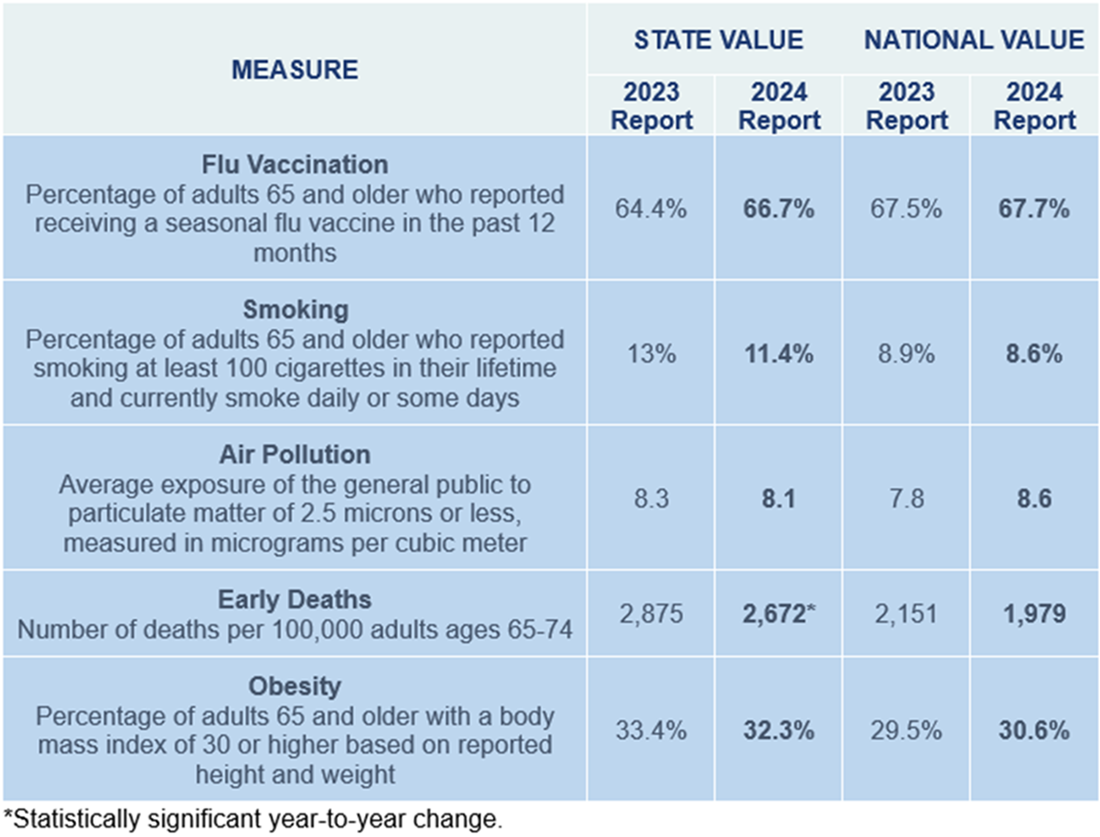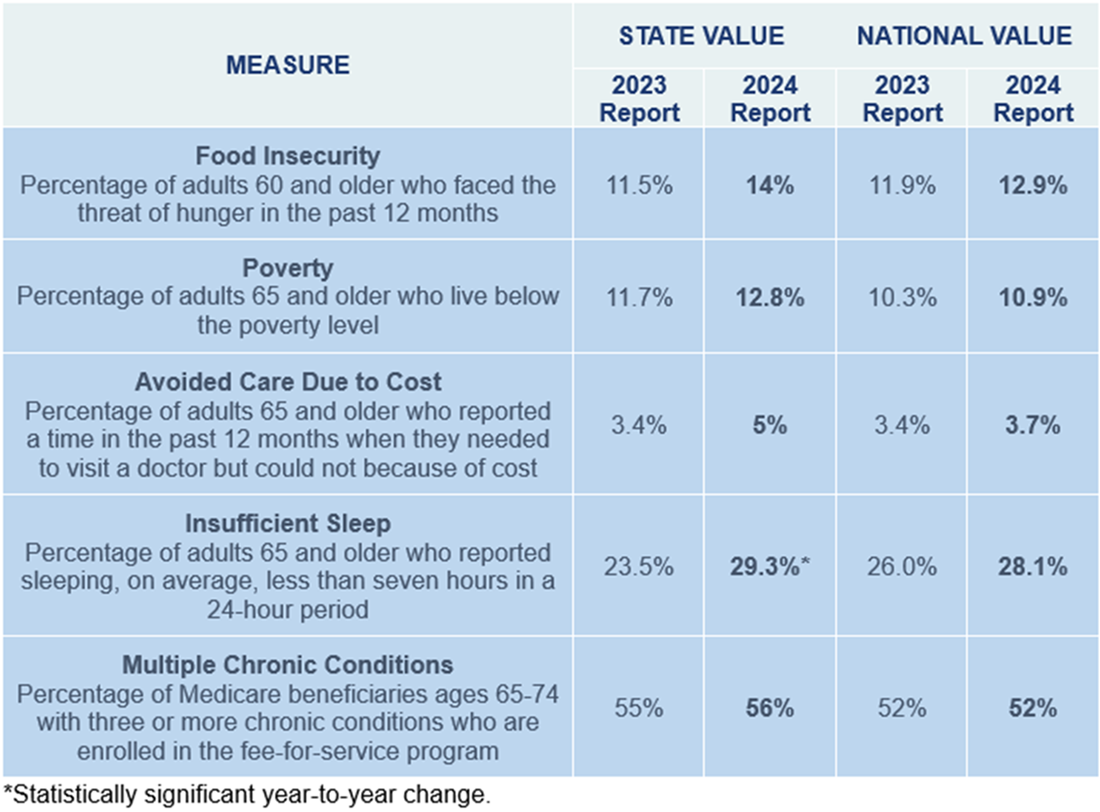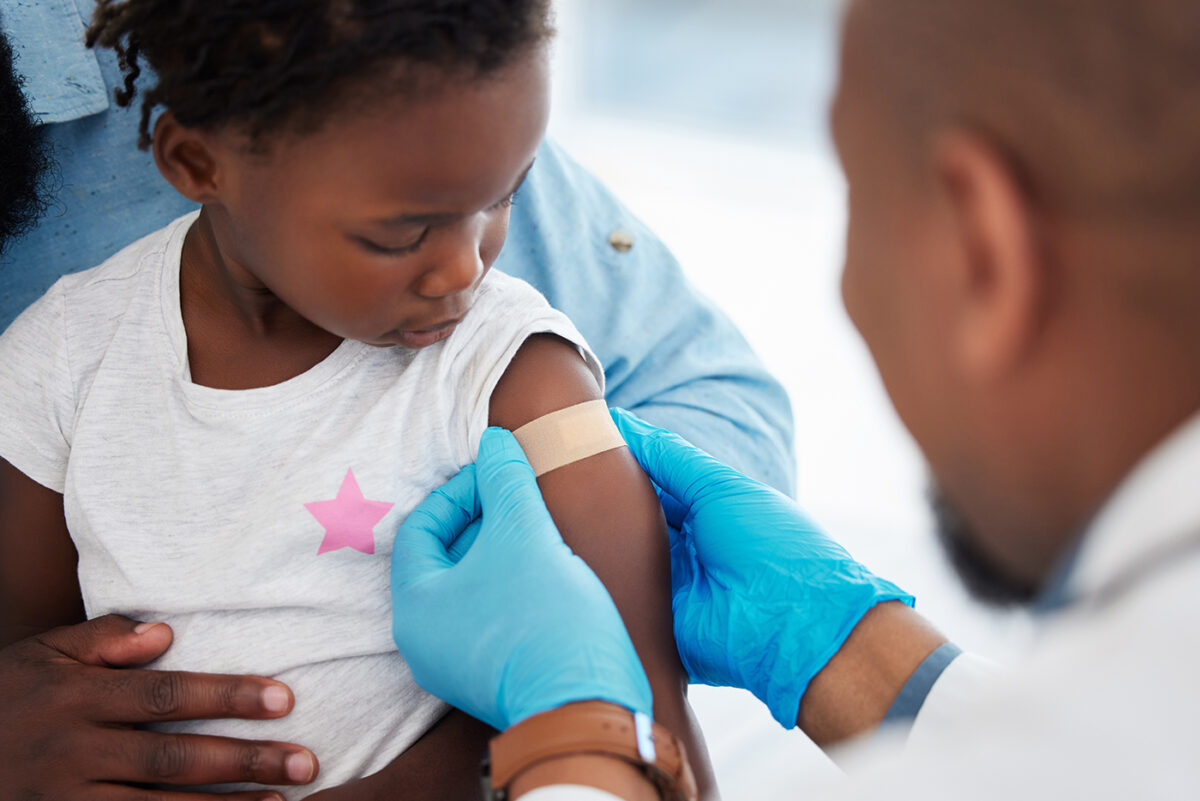
Author
Katrina Bishop
Policy Analyst
Elizabeth (Izzy) Montgomery, MPA
Policy Analyst
Contact
ACHI Communications
501-526-2244
jlyon@achi.net
Arkansas ranks 45th among the states for the health and well-being of older adults, according to a new report by the United Health Foundation.
The 2024 Senior Report, released in May, analyzes 52 health measures from 24 distinct data sources to present a comprehensive overview of the health and well-being of the nation’s older adults. The report assigns state rankings based on 35 of those measures. It focuses on five categories of health — social and economic factors, physical environment, clinical care, behaviors, and health outcomes — with the objectives of presenting a holistic view of health and providing a benchmark for states to use in monitoring health trends over time, highlighting disparities, driving change, and improving health.
Despite low rankings in many categories, Arkansas performs better than the national average on eight of the 35 ranked measures in the report and ties with the national average on one measure. The report finds that Arkansas has improved in some values and rankings compared to the prior year’s report, as shown in the graphic below, but except where noted, the year-to-year changes are within the margins of error for those categories.
Areas Where Arkansas Improved

Arkansas performs below the national average on 27 of the 35 ranked measures in the latest report. The graphic below shows some of the measures that have worsened in this year’s report, although most of the year-to-year changes are within the margins of error for those categories.
Areas Where Arkansas Worsened

Arkansas continues to be among the worst-ranked states for Supplemental Nutrition Assistance Program (SNAP) participation (49th), motor vehicle deaths (49th), physical inactivity (48th), and tooth extractions (48th) among older adults.
Notably, Arkansas’s SNAP participation rate for older adults living in poverty is less than half that of the nation’s SNAP participation rate, with 37.3 participants in Arkansas per 100 adults age 60 and above who live in poverty, compared with 81 participants per 100 senior adults in poverty nationally. We identified factors that contribute to food insecurity for seniors and discussed policy options for addressing the issue in our infographic on senior hunger.
Other Key Arkansas Findings
- Suicide was nearly eight times more common among older men (40 suicides per 100,000 men 65 and older) than among older women (5 suicides per 100,000 women 65 and older) in 2020-2022.
- Early deaths were three times more common among White older adults (2,682 early deaths per 100,000 White adults ages 65-74) than among Asian older adults (830 early deaths per 100,000 Asian adults ages 65-74) in 2022.
- The report notes a 75% increase in drug deaths among older adults. The rate of these deaths increased from four to seven deaths per 100,000 adults 65 and older between the period of 2017-2019 and the period of 2020-2022.
According to the report, the healthiest state for older adults is Utah, followed in descending order by Colorado, Vermont, New Hampshire, and Minnesota. Mississippi is ranked as the least healthy state, with Louisiana, West Virginia, Kentucky, and Oklahoma rounding out the bottom five.
Senior Health Disparities
Nationally, the report shows significant racial and ethnic disparities for measures such as early deaths, drug deaths, depression, and poverty. In 2022, the rate of early deaths was nearly three times higher for Black older adults (2,791 deaths per 100,000 Black adults ages 65-74) than for Asian older adults (963 deaths per 100,000 Asian adults ages 65-74). Between 2020 and 2022, the drug death rate was nearly 12 times higher among Black older adults (30.8 deaths per 100,000 Black adults 65 and older) than among Asian older adults (2.6 deaths per 100,000 Asian adults 65 and older). Depression was more than three times higher among multiracial older adults (24.9%) than among Asian older adults (7.4%), and poverty was more than twice as high among American Indian/Alaska Native older adults (19.8%) as it was among White older adults (8.8%).
For the first time, the 2024 Senior Report examines health disparities, including mental health disparities, across the nation based on disability status, sexual orientation, and veteran status. The analyses show high rates of depression and frequent mental distress among older adults with disabilities — particularly among those who have difficulty with cognition (44.3% and 33.2%, respectively) — compared with older adults without disabilities (9.5% and 4.3%, respectively). The report also notes that rates of depression and frequent mental distress are higher among LGBTQ+ older adults (24% and 12.8%, respectively) than among straight older adults (15.4% and 8.8%, respectively). Depression is more common among older adults who have not served in the military (16%) compared with those who have served (13.1%).






